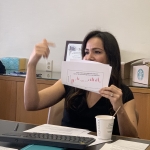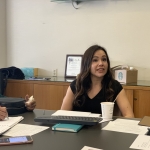Black and Latino children, particularly from low-income families, could lose crucial services, unless something is done to rectify their long-standing undercount in the U.S. Census.
In the 2010 Census, nearly two million children (approximately 4.6%) ages 0-5 were undercounted or miscounted, and one million were not counted at all, according to Mayra Alvarez, president of The Children’s Partnership, a statewide policy and advocacy organization focused on child health and wellbeing.
Counting children translates to more funding for key programs, including Medicaid, CHIP (Children’s Health Insurance Program), foster care, adoption assistance, and child care, indicates Alvarez and other child advocates. This year, they have partnered with ethnic media to help raise awareness about how children ages zero to four can be easily undercounted, solutions, and why all children must be counted in Census 2020.
“When you think about the impact on funding distribution, on political representation, missing a million young kids that are disproportionately kids of color, makes a big difference when it translates into those dollars,” said Alvarez during a recent presentation to the Los Angeles Census Ethnic Media Table.
Counting children when the Census starts on April 1 also means better planning for school sizes, health facilities, and a more equitable distribution of funds. In reality, an undercounting could cost California more than $3 billion in federally funded programs, said Alvarez in her January 16 presentation to ethnic media at Asian Americans Advancing Justice – L.A.
Because the Census Count occurs every 10 years, children could miss out on many resources for a big chunk of their childhoods, if they are not counted. Some of those most at risk of being missed include children who are isolated due to language barriers, who live in renter-occupied housing and multi-unit structures, and newborns, for instance.
“A million children were not counted, but the rates are double for kids of color – Black or Latino kids – than for White children,” said Alvarez.
According to research, young children were missed due to different types of errors, such as the housing unit was missed, entire household or part of the household, or just the child was missed. Whole-household errors were more common for biological and adopted children, while partial-household errors were more common for grandchildren, other relatives, and non-relatives of the householder. They may have been missed along with their young mothers, and, participants made errors such as counting children who were not related to the householder or who were relatives other than biological and adopted children, according to Census Research research of the 2010 count.
The key thing for parents and guardians to know is they can fill out the Census on their own schedule, and it only takes about 10 minutes to complete, said Alvarez. In addition, the Census Count data collected private and cannot be shared, immigrants’ rights activists point out. They emphasize the Census Bureau has very strict, confidential protection laws that prohibit all inter-agency information sharing, meaning it cannot disclose a person’s name, immigration status, or other information.
“Much of our work is driven from the idea that in order to have an equitable California for all kids, we really should focus on our most marginalized communities, mainly children of color, low income children of color. Parents should know that the number of young kids in the Census that are missed, is large, it’s growing and the consequences are serious,” said Alvarez.










